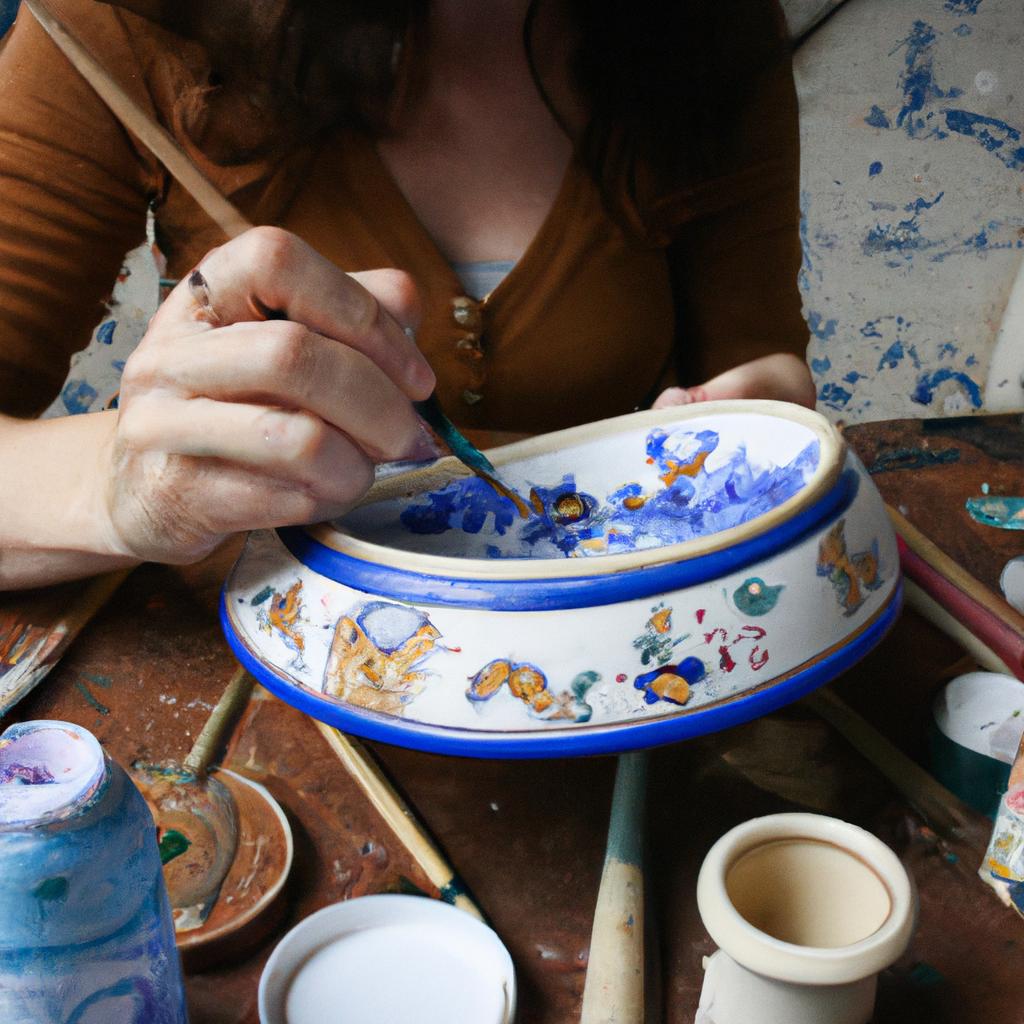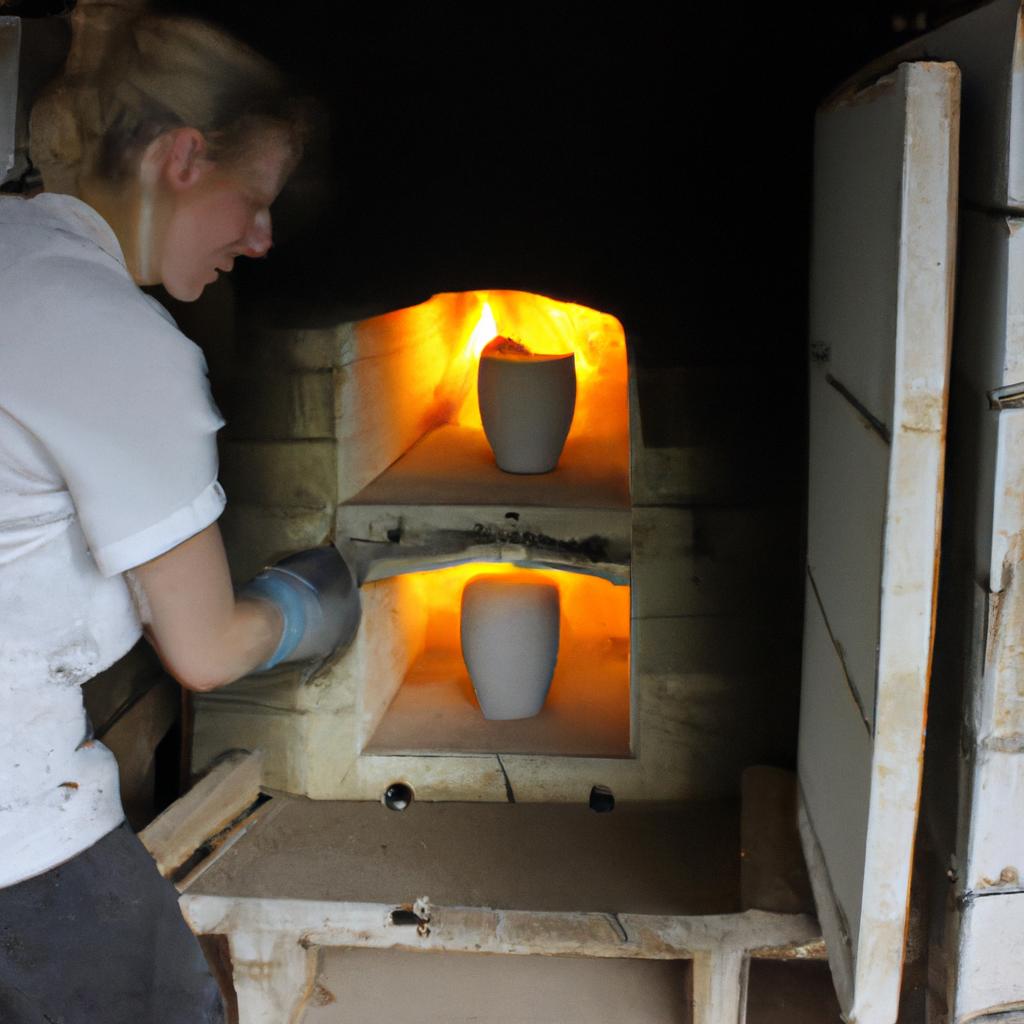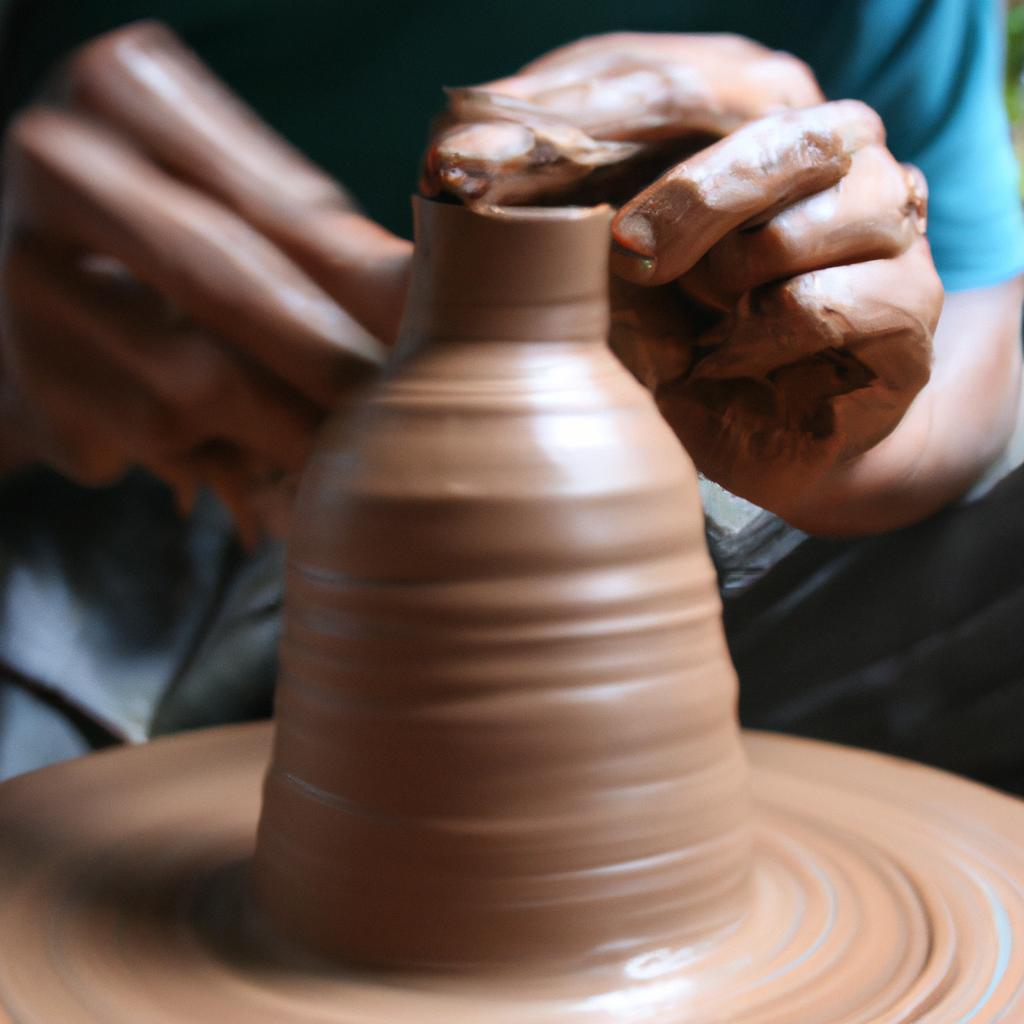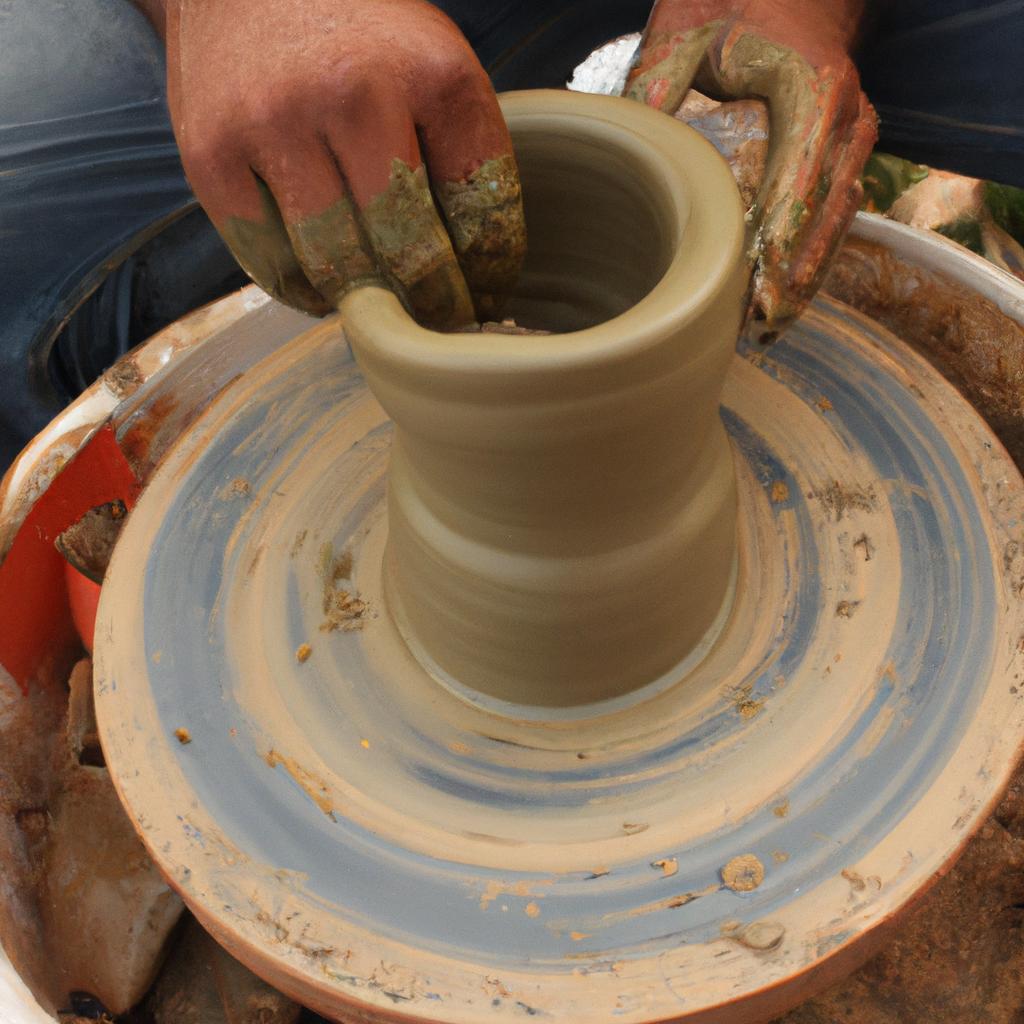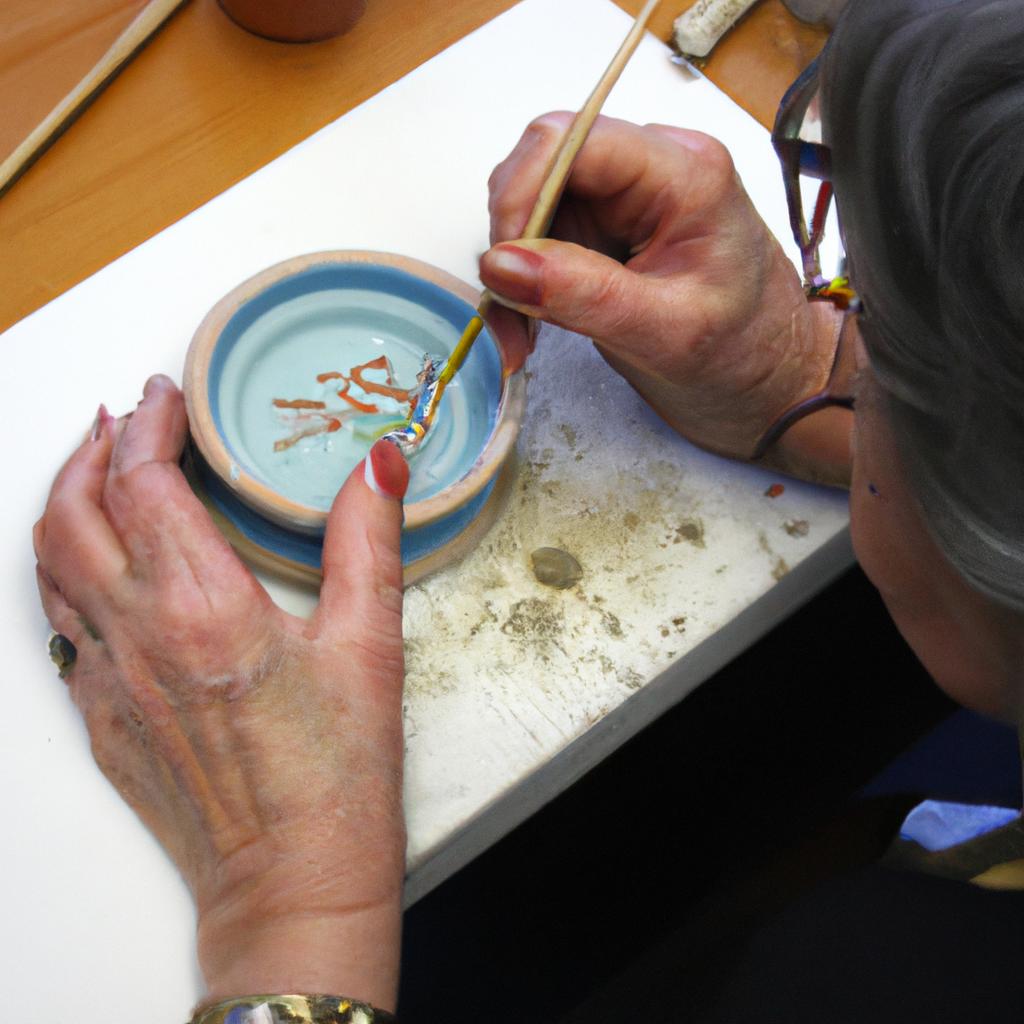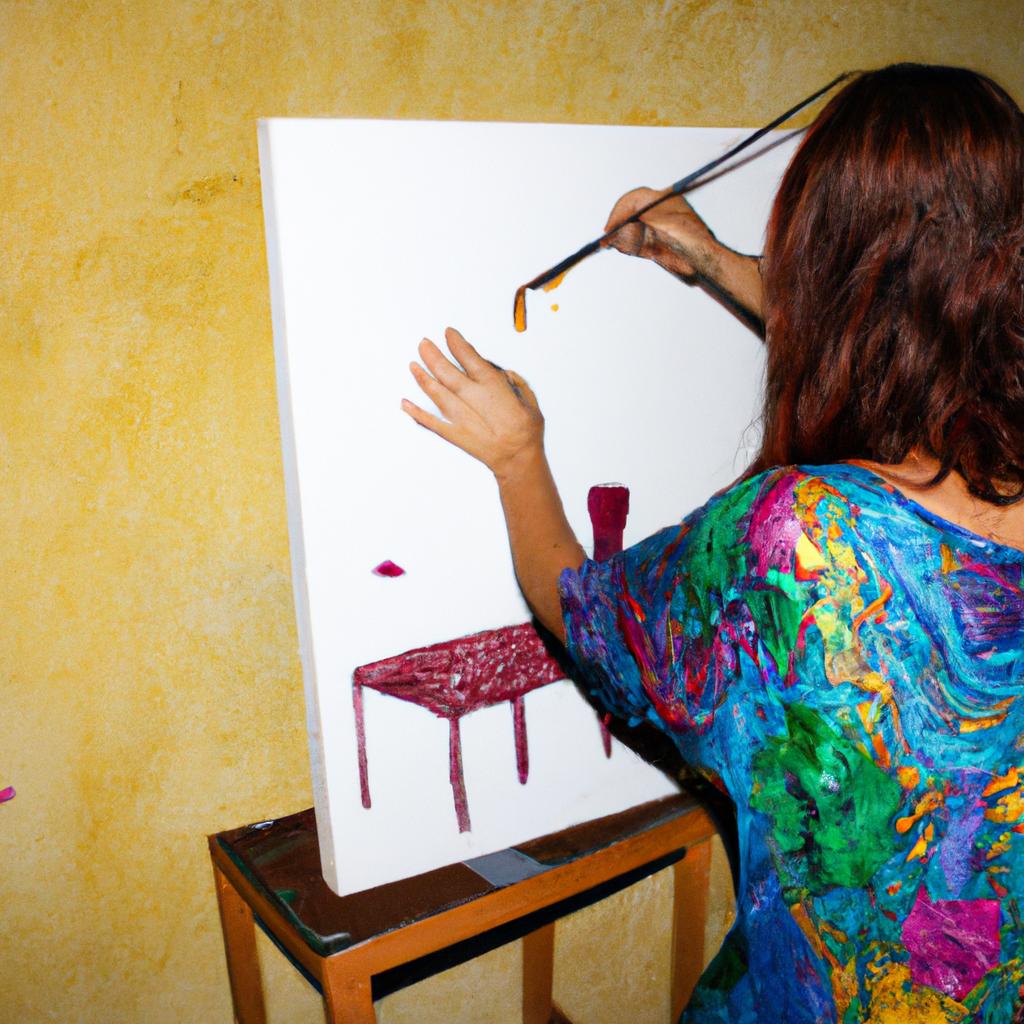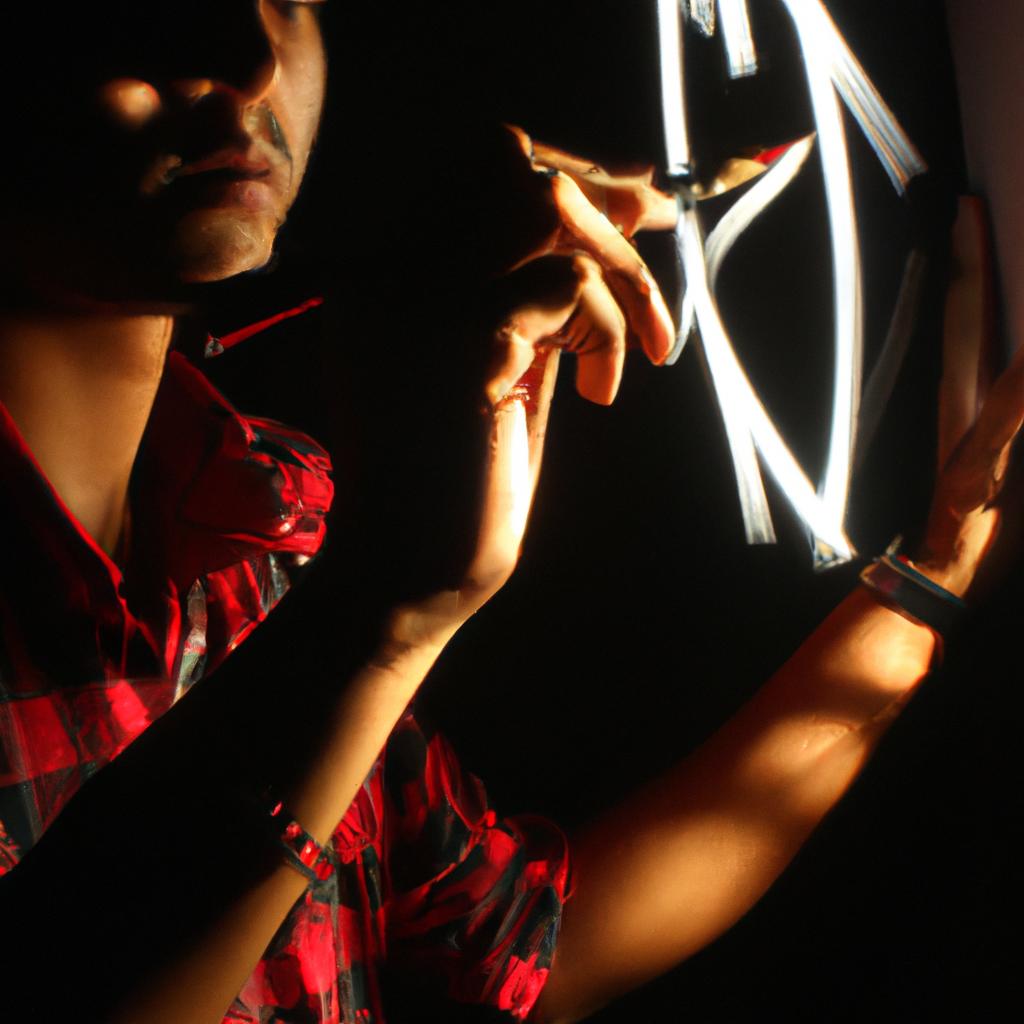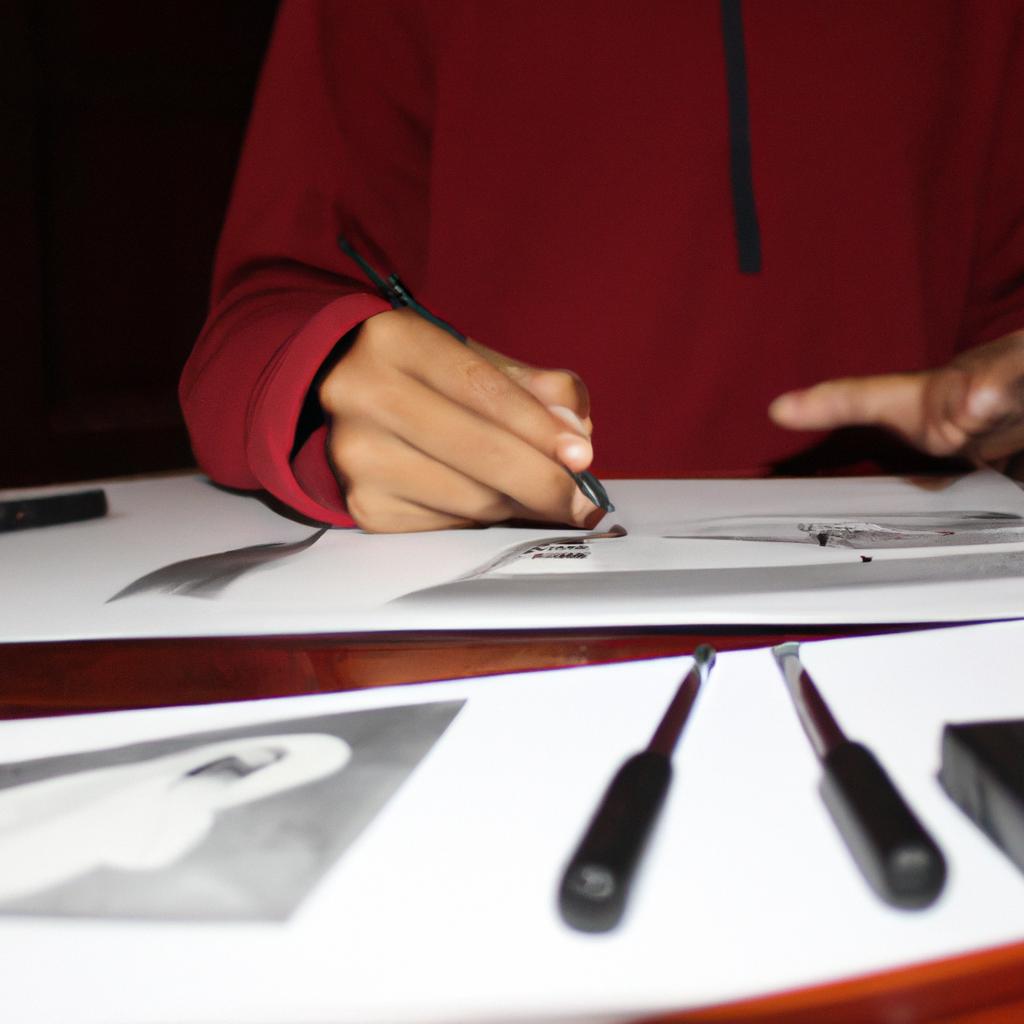Clay Modeling in Visual Arts: Ceramics
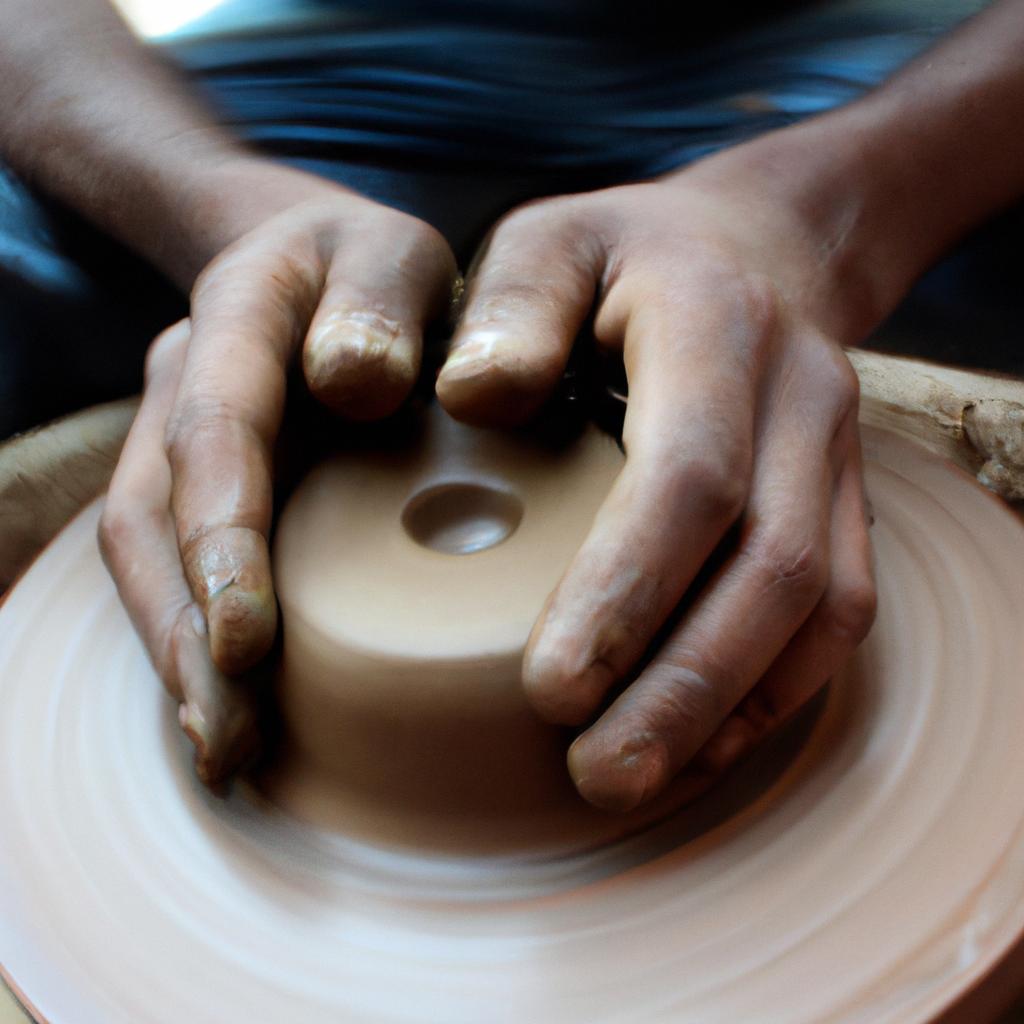
Clay modeling is an integral part of visual arts, particularly in the realm of ceramics. This artistic technique involves shaping and manipulating clay to create three-dimensional objects that range from functional pottery to sculptural masterpieces. Clay as a medium has been used for centuries by artists around the world, offering endless possibilities for creativity and expression.
For instance, let us consider the case of a hypothetical artist named Maria who specializes in ceramic sculpture. Inspired by nature’s intricate beauty, Maria uses clay modeling techniques to craft lifelike sculptures of animals. Through her skilled hands and meticulous attention to detail, she captures the essence and spirit of each creature she creates with remarkable accuracy. The ability to mold clay provides her with a versatile medium that allows her imagination to come alive in tangible form.
In this article, we will explore the artistry behind clay modeling in visual arts, specifically focusing on its application within ceramics. We will delve into the history of this ancient practice, examining how it has evolved over time while maintaining its fundamental principles. Additionally, we will discuss various techniques employed by contemporary artists and delve into their unique creative processes. By understanding the intricacies of clay modeling in visual arts, we can gain a deeper appreciation for this timeless craft and recognize its significance within both historical and contemporary artistic contexts.
To begin, let’s delve into the history of clay modeling. The use of clay as a medium for artistic expression dates back to prehistoric times when early humans first discovered its malleable properties. Archaeological evidence shows that clay was used to create various objects, ranging from simple utensils to intricately designed figurines. These ancient artworks provide us with a glimpse into the creative minds and cultural practices of our ancestors.
As civilizations developed, so did the techniques and applications of clay modeling. In ancient Mesopotamia, for example, artists used clay to create intricate relief sculptures depicting scenes from daily life or religious narratives. Similarly, in ancient Egypt, clay was employed in the creation of ceramic vessels adorned with hieroglyphics and symbolic motifs.
Throughout history, different cultures across the globe have embraced clay modeling as an essential part of their artistic traditions. From Greek pottery adorned with elaborate designs to Chinese porcelain delicately crafted with refined techniques, the versatility of clay has allowed artists to explore a wide range of aesthetic possibilities.
In modern times, clay modeling continues to be a vital aspect of ceramics. Artists today employ various techniques such as hand-building, wheel-throwing, and sculpting to manipulate clay into desired forms. Hand-building involves shaping and molding clay by hand without the use of a potter’s wheel, allowing for more expressive and organic creations. Wheel-throwing utilizes a rotating wheel that enables artists to shape symmetrical vessels like bowls and vases.
Sculpting is another popular technique used in contemporary clay modeling. Sculptors use their hands or tools to shape and carve the clay into three-dimensional forms that can range from realistic representations to abstract interpretations. This approach allows artists to push the boundaries of what is possible with this versatile material.
Furthermore, advancements in technology have also influenced the field of clay modeling in recent years. Ceramic 3D printing has emerged as an innovative method for creating complex ceramic objects with precision and efficiency. This technique involves using computer software to design a digital model, which is then translated into physical form using a specialized 3D printer that extrudes clay in layers.
In conclusion, clay modeling occupies a significant place within the visual arts, particularly in the realm of ceramics. Its rich history and enduring appeal have made it an integral part of artistic expression throughout different cultures and time periods. From ancient civilizations to contemporary artists, clay modeling continues to captivate audiences with its ability to transform humble clay into beautiful and meaningful works of art.
The History of Clay Modeling
One fascinating example that highlights the significance and versatility of clay modeling in visual arts is the renowned terracotta army discovered in 1974 near Xi’an, China. This incredible archaeological find consisted of thousands of life-sized clay sculptures representing soldiers, horses, chariots, and other figures intended to accompany Emperor Qin Shi Huang in the afterlife. The intricate details captured by these ancient artisans provide a glimpse into the rich history of clay modeling as an artistic expression.
Throughout human civilization, clay has been utilized for various purposes beyond practical use, such as pottery and construction. Its malleable nature allows artists to shape it into forms limited only by their imagination. In art history, clay modeling emerged as a distinct discipline during the Mesopotamian era around 3000 BCE when ceramic vessels became more decorative and figurines began to appear. From there, its popularity spread across different cultures and time periods.
To evoke an emotional response from audiences experiencing clay modeling’s historical journey, consider the following bullet points:
- Ancient civilizations: Discover how early societies like Egypt, Greece, and Rome incorporated clay models into religious rituals or burial practices.
- Renaissance revival: Explore how classical antiquity inspired artists during this period to revive interest in sculpting with materials like terra cotta.
- Contemporary innovations: Delve into modern techniques adopted by contemporary artists that push boundaries through experimentation with materials and concepts.
- Cultural preservation: Highlight instances where indigenous communities continue traditional clay modeling practices as a means of preserving cultural heritage.
Additionally, let us explore a table showcasing key milestones in the history of clay modeling:
| Time Period | Key Developments | Notable Artists |
|---|---|---|
| Mesopotamian Era | Emergence of decorative ceramics | Unknown |
| Renaissance | Revival of classical influences | Andrea della Robbia |
| Modern Times | Experimentation with materials and concepts | Louise Bourgeois, Ai Weiwei |
| Indigenous Cultures | Preservation of cultural heritage through clay | Maria Martinez, Juan Quezada |
By examining these significant historical moments in clay modeling, it becomes evident that this art form has continually evolved and adapted to reflect the diverse cultures and artistic movements throughout time. In the subsequent section on “Different Techniques in Clay Modeling,” we will explore how artists have developed various approaches to manipulate this versatile medium to create captivating pieces of art.
Different Techniques in Clay Modeling
Transitioning from the rich historical background of clay modeling, let us now delve into the various techniques employed by artists within this captivating art form. To illustrate the versatility and potential of these techniques, consider the following example: an artist meticulously molds a lump of clay into a lifelike sculpture of a majestic lion. This intricate masterpiece highlights the skillful execution and artistry involved in clay modeling.
Clay modeling offers artists numerous avenues through which they can express their creativity. Here are some common techniques used in this artistic practice:
-
Handbuilding: One of the most fundamental methods, handbuilding involves shaping clay using only one’s hands and simple tools like wooden dowels or pottery ribs. Artists can employ different handbuilding techniques such as pinch potting, coiling, or slab construction to create unique forms.
-
Wheel Throwing: Utilizing a potter’s wheel, artisans spin clay while simultaneously applying pressure with their fingers to shape it symmetrically. This technique allows for precise control over form and proportion, resulting in elegant vessels like bowls or vases.
-
Slip Casting: Employed primarily for mass production purposes, slip casting involves pouring liquid clay (known as slip) into molds to create identical replicas of an original model. Once dried and fired, these pieces can be finished with glazes or other decorative elements.
-
Sculpting: In sculpting, artists manipulate clay by adding or subtracting material to achieve desired shapes and textures. Whether creating realistic figures or abstract forms, sculptors use specialized tools like wire loops, carving knives, or rasps to refine their creations.
To better understand these techniques’ emotional impact on audiences when brought to life through visual representation:
- Imagination: The ability to transform a mere lump of clay into awe-inspiring sculptures that ignite imagination.
- Tactility: The tactile nature of working with clay evokes a sense of connection and intimacy with the material, enhancing the artist’s emotional engagement.
- Versatility: Clay modeling encompasses a wide range of techniques that cater to various artistic styles and preferences, providing artists with endless possibilities for self-expression.
- Timelessness: The enduring appeal of clay modeling transcends time, as seen in ancient artifacts that continue to captivate audiences today.
Table: Emotional Responses Elicited by Different Techniques
| Technique | Emotional Response |
|---|---|
| Handbuilding | Connection |
| Wheel Throwing | Precision |
| Slip Casting | Replication |
| Sculpting | Transformation |
As artists explore these different techniques, they continuously push boundaries and challenge themselves creatively. Next, we will delve into the tools and materials required for clay modeling, further equipping budding artists with essential knowledge to embark on their own artistic journey.
Tools and Materials for Clay Modeling
Transitioning from the previous section on different techniques, let us now delve into a deeper understanding of clay modeling in visual arts. To illustrate the versatility and creative potential of this medium, consider the following example: imagine an artist sculpting a lifelike bust using various hand-building techniques like coiling, pinching, and slab construction. The artist carefully molds each detail with precision, showcasing their mastery over clay as they bring their vision to life.
Clay modeling offers artists a wide range of possibilities for self-expression. Here are some key points to consider when exploring this art form:
-
Hand-building Techniques:
- Coiling: This technique involves creating forms by layering coils or ropes of clay.
- Pinching: By gently squeezing and shaping small amounts of clay between their fingers, artists can create intricate details and organic shapes.
- Slab Construction: Artists roll out sheets of clay and cut them into desired shapes before assembling them to build larger structures.
-
Wheel Throwing:
- With the use of a potter’s wheel, artists can shape clay symmetrically and achieve precise proportions.
- This technique requires skillful coordination between hands and footwork to control both speed and pressure applied during spinning.
-
Sculptural Modeling:
- Artists may choose to work three-dimensionally by adding or subtracting clay from a solid mass until the desired form emerges.
- Tools such as carving knives or wire loops aid in refining details while maintaining structural integrity.
-
Surface Decoration:
- After completing the main structure, artists have numerous options for surface embellishment through glazing, painting, etching, or texturing.
To further grasp the breadth of possibilities within clay modeling, refer to the table below that highlights its various applications across historical periods:
| Historical Period | Notable Examples |
|---|---|
| Ancient Egypt | Sculpted figurines and vessels |
| Renaissance | Elaborate ceramic tile installations |
| Art Nouveau | Intricate organic forms |
| Contemporary | Abstract sculptures |
In summary, clay modeling in visual arts encompasses a multitude of techniques that allow artists to create stunning works. From hand-building methods like coiling, pinching, and slab construction to wheel throwing and sculptural modeling, the possibilities are vast. The surfaces can be further enhanced through various decorative techniques such as glazing or painting. As we continue our exploration into the versatility of clay as an artistic medium, let us now turn our attention to its potential for experimentation and innovation.
Exploring the Versatility of Clay
In the previous section, we explored the essential tools and materials needed for clay modeling. Now let’s delve into the versatility of clay as a medium in visual arts.
To illustrate this point, consider the case of an artist using clay to create sculptural forms that depict human emotions. By skillfully manipulating the malleable material, they can capture expressions of joy, sadness, anger, or contemplation with remarkable realism. This example demonstrates how clay allows artists to convey complex emotions through three-dimensional art.
The versatility of clay lies not only in its ability to express intricate emotions but also in its adaptability across various artistic styles and techniques. Here are some ways in which artists can explore the limitless possibilities offered by this versatile medium:
- Hand-building: Artists can shape clay using their hands and simple tools to create sculptures or functional objects such as bowls or vases.
- Wheel throwing: Using a potter’s wheel, artists can transform lumps of clay into symmetrical vessels like cups or plates.
- Slip casting: This technique involves pouring liquid clay, known as slip, into molds to create multiple identical copies of an object.
- Sculpting: Whether it’s carving intricate details or building up layers of clay, sculptors can mold and shape the material according to their creative vision.
Let us now take a moment to visually understand these diverse approaches by exploring a table showcasing different techniques used in ceramics:
| Technique | Description | Example |
|---|---|---|
| Hand-building | Shaping clay with hands and basic tools | Coil-built sculpture |
| Wheel throwing | Forming symmetrical shapes on a potter’s wheel | Thrown porcelain vase |
| Slip casting | Pouring liquid clay into molds for replication | Mass-produced ceramic |
| Sculpting | Carving or molding clay to create detailed figurines or reliefs | Clay bust of a person |
As we have seen, clay offers artists endless possibilities to express their creativity. However, before these artworks reach their final form, they must undergo the firing process. This essential step involves subjecting the clay to high temperatures in a kiln, resulting in its transformation into durable ceramic objects. By comprehending this crucial stage, we can better appreciate the intricate journey from pliable clay to enduring artwork.
Now let’s explore the fascinating world of understanding the firing process and how it contributes to the final outcome of ceramics.
Understanding the Firing Process
In the previous section, we delved into the various techniques used in clay modeling. Now, let us examine the versatility of clay as a medium in visual arts and its ability to bring artistic visions to life.
Imagine an artist sculpting a lifelike human figure out of clay, capturing every intricate detail with precision and skill. This is just one example that showcases how clay can be molded and transformed into three-dimensional forms that express ideas, emotions, and stories.
To better understand the potential of clay modeling in visual arts, consider the following points:
- Flexibility: Unlike other art mediums such as paint or pencil, clay offers artists the flexibility to create both abstract and realistic sculptures. Its malleable nature allows for endless possibilities when it comes to shaping and manipulating form.
- Texture Exploration: Working with clay opens up opportunities for artists to explore different surface textures. From smooth finishes to rough textures, each touch adds depth and character to the artwork.
- Expressive Possibilities: The process of working with clay enables artists to convey a wide range of emotions through their creations. Whether it’s joy, sadness, or anger, these sentiments can be captured and conveyed effectively through carefully crafted sculptures.
- Physical Engagement: Sculpting with clay requires physical engagement from the artist. The tactile experience of molding and shaping brings forth a sense of connection between the creator and their creation.
Embracing these aspects of clay modeling in visual arts not only expands an artist’s creative horizons but also provides viewers with an engaging sensory experience.
| Aspect | Description |
|---|---|
| Flexibility | Offers endless possibilities for creating abstract or realistic sculptures |
| Texture Exploration | Allows for exploration of diverse surface textures |
| Expressive Possibilities | Conveys a wide range of emotions effectively |
| Physical Engagement | Requires physical involvement from the artist, creating a sense of connection with the artwork |
By understanding and utilizing these features, artists can harness the full potential of clay modeling in their creative endeavors. In our next section on “Understanding the Firing Process,” we will delve into the crucial step that transforms clay sculptures into durable and permanent artworks.
As we explore further into the world of clay modeling, let us now turn our attention to its place in contemporary art and how artists continue to push boundaries using this versatile medium.
Clay Modeling in Contemporary Art
Having explored the intricate process of firing ceramics, we now turn our attention to another facet of clay modeling – its application in contemporary art. This section delves into how artists utilize clay as a versatile medium for creative expression, pushing boundaries and redefining traditional notions of sculpture.
Section:
The integration of clay modeling into contemporary art has given rise to innovative forms and concepts that challenge conventional artistic practices. For instance, let’s consider the work of renowned sculptor Jane Thompson. In her series titled “Metamorphosis,” she combines ceramic elements with mixed media to explore themes of transformation and identity. By juxtaposing delicate porcelain figures against bold industrial materials, Thompson presents a visual narrative that invites viewers to reflect on their own personal growth and evolution.
To further emphasize the profound impact of clay modeling in contemporary art, it is essential to understand some key aspects that distinguish this approach from more traditional methods:
- Fluidity and adaptability: Unlike other sculpting mediums such as stone or metal, clay offers artists greater flexibility during the creation process. It allows them to experiment freely with various techniques like hand-building, wheel throwing, or slip casting.
- Textural exploration: The malleable nature of clay enables artists to manipulate its surface texture, resulting in visually captivating sculptures that evoke tactile sensations.
- Expressive possibilities: Through clay modeling, artists can convey emotions and narratives by utilizing unique gestures, postures, and expressions captured within their creations.
- Collaborative potential: Many contemporary artists embrace collaboration with ceramists or pottery studios for larger-scale projects. This collaborative spirit fosters cross-disciplinary exchange and encourages experimentation through shared knowledge and expertise.
Table (Markdown format):
| Fluidity | Textural Exploration | Expressive Possibilities | Collaborative Potential |
|---|---|---|---|
| Offers flexibility during the creation process | Enables artists to manipulate surface texture | Allows conveyance of emotions and narratives through gestures, postures, and expressions | Encourages collaboration for larger-scale projects |
| Facilitates experimentation with various techniques | Evokes tactile sensations in viewers | Enhances visual impact and engagement | Fosters cross-disciplinary exchange |
The integration of these elements into contemporary clay modeling has opened up new possibilities for artistic exploration. Artists can now engage with their audience on a deeper level by evoking emotional responses through the tangible qualities inherent in ceramic sculptures.
In summary, the use of clay as a medium in contemporary art allows artists like Jane Thompson to push boundaries, challenge norms, and stimulate meaningful conversations. By harnessing its fluidity and adaptability, exploring textural possibilities, embracing expressive potential, and fostering collaborative endeavors, clay modeling continues to enrich the diverse landscape of visual arts.
Note: The next section (H2) will be ‘Clay Modeling Techniques in Contemporary Ceramics.’


